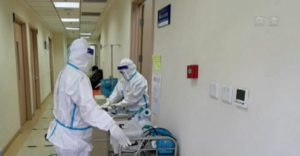
Beijing: Surveillance of social population, no prevalence of XBB variant strains detected for the time being
This afternoon, Beijing held a press conference on the prevention and control of the new crown epidemic to release relevant information and respond to social concerns.
A reporter asked: Recently, the XBB.1.5 strain of New Coronavirus has been spreading rapidly outside of China. How to monitor the early warning response to the new coronavirus infection?

File photo
Pang Xinghuo, Deputy Director of Beijing CDC and member of the National Expert Group on Novel Coronavirus Pneumonia: During the surveillance of mutated strains in the social population, no XBB and BQ.1 strains have been found to be prevalent for the time being.
In order to dynamically grasp the level of new coronavirus infection and its changing trend in the “B class B” population, the city has specially formulated the “Beijing New Coronavirus Infection Surveillance and Early Warning Work Plan” to build a multi-dimensional comprehensive surveillance and early warning system.
First, the public nucleic acid and antigen testing monitoring. Daily collection of voluntary nucleic acid and antigen testing of residents, nucleic acid screening tests of key industries and key institutions, and nucleic acid testing of medical institution attendees, and other data results, dynamic analysis and diagnosis of infection levels and trends.
The second is the monitoring of new coronavirus infection cases in medical institutions. In the existing sentinel surveillance medical institutions of new coronavirus infection cases, daily collection and monitoring dynamic analysis of the number of outpatient (emergency) visits, the number of people with acute febrile respiratory symptoms, the total number of hospital admissions, the number of cases of severe acute respiratory infections and their nucleic acid or antigen detection of new coronavirus, the number of positive tests.
Third, the community infection level monitoring. Randomly selected residents of the city’s community (village), community (village) personnel infection level survey of all family members, and dynamic survey of residents’ infection status network questionnaire to dynamically understand the progress of the epidemic in the city.
Fourth, nucleic acid testing and monitoring of incoming personnel. Infection rate and variant strain monitoring of incoming personnel, dynamic grasp of the level of infection of new coronavirus and virus variation of incoming personnel.
Fifth, the new coronavirus pathogenetic surveillance. Relying on the network of sentinel hospitals, aggregation and outbreak surveillance, carry out monitoring of the positive rate and variant composition of the new coronavirus, dynamically analyze the level of infection and changes in viral strains in the city’s population, promptly identify new variant strains of local epidemics, and dynamically track potentially important variant strains.
Sixth, other related monitoring. Carry out key institutions, key populations, sewage, population flow data monitoring, etc., and systematically collect data on the whole chain of new coronavirus infection to provide a comprehensive data base for early warning response.
Through the above multi-channel and multi-source comprehensive monitoring, real-time monitoring of the mutation of the new coronavirus, the development trend of the epidemic and the extent of the ripple effect, to provide a scientific basis for the development and implementation of appropriate social prevention and control measures to effectively respond to the epidemic, to protect the lives and health of the people.


Average Rating